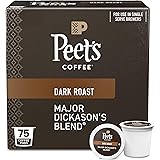How to Brew Perfect French Press Coffee: A Detailed Guide to Flavorful Extraction
Achieving consistently delicious coffee at home often feels like a challenge, especially with methods like the French Press. While many believe simply adding coffee and hot water is enough, the reality is that the subtle nuances make all the difference. As you saw in the video above, mastering the French Press method hinges on understanding a few critical steps and measurements that elevate a good cup into an exceptional one. This guide delves deeper into those details, ensuring your next brew of French Press coffee is nothing short of perfect.
Mastering the French Press Method: An Immersion Advantage
The French Press stands apart in the world of coffee brewing due to its unique “immersion method.” Unlike drip brewers or pour-overs where water flows through grounds, the French Press fully submerges the coffee in water for the entire brewing duration. This complete immersion ensures maximum contact between coffee particles and water, leading to a full-bodied, rich cup.
Moreover, the French Press utilizes a metal filter, a key differentiator from paper-filtered methods. This metal mesh allows the natural oils and fine micro-sediments from the coffee to pass through into your cup. The result is a more viscous, robust brew with a distinct mouthfeel and richer flavor profile that many coffee lovers adore.
The Foundation of Flavor: Water and Coffee Quality
Just as the video emphasizes, starting with great water is paramount for exceptional French Press coffee. Filtered water free from impurities or strong mineral tastes allows the true characteristics of your coffee to shine through. However, beyond filtration, the water’s temperature is equally critical; aim for water between 195-205°F (90-96°C) to ensure optimal extraction without scorching the grounds.
Equally important is the quality of your coffee beans and their freshness. Always choose freshly roasted beans and grind them just before brewing for the best flavor. The barista in the video highlights a precise coffee-to-water ratio: two grams of coffee per ounce of water. For a 30 oz pot, this means 60 grams of coffee, translating to approximately a 1:15 ratio by weight, which is an excellent starting point for a balanced and flavorful cup.
Optimal Grind Size for French Press Coffee
One of the most crucial factors in brewing French Press coffee is the grind size. The video correctly states that a coarse grind is essential for this method. Think of sea salt or breadcrumbs – visible, distinct particles, not fine powder. This coarse grind is specifically chosen for the immersion brewing process and the longer contact time.
A coarse grind prevents over-extraction, which can lead to a bitter and astringent taste. It also minimizes the amount of “fines” (tiny coffee particles) that can pass through the metal filter, reducing sediment in your cup. Conversely, using a fine grind in a French Press would result in significant over-extraction, a muddy cup, and a very difficult plunge.
The Art of the Bloom: Releasing the Flavors
The “off-gassing” process, commonly known as the bloom, is a fascinating and vital step in brewing French Press coffee. When hot water first hits fresh coffee grounds, carbon dioxide (CO2) trapped within the beans from the roasting process is rapidly released. This creates a frothy layer on top of the coffee slurry, often referred to as the bloom.
As the video demonstrates, allowing for about 30 seconds for this bloom to occur is important. This release of CO2 ensures more even extraction by preventing gas bubbles from hindering water from fully saturating all the coffee particles. Skipping the bloom can lead to uneven extraction and a less flavorful, potentially sour cup. Take a moment to observe the bloom; it’s a beautiful indicator of fresh coffee.
Perfecting Your French Press Brew Time and Saturation
After the bloom, the next critical step is to gently continue filling the pot with hot water, ensuring uniform saturation without creating excessive turbulence. The barista advises against over-mixing, and for good reason. Excessive stirring can agitate the coffee fines, causing them to remain suspended in the water and potentially lead to over-extraction and a muddier cup. If you notice any clumps, a gentle stir to ensure all grounds are wet is acceptable, but avoid vigorous swirling.
The total brewing time for French Press coffee is typically between three and three and a half minutes, with a total extraction time around four minutes. This extended contact time is why the coarse grind is so important. During this period, the coffee compounds dissolve into the water, developing the rich flavors and aromas unique to this brewing method. Be patient and allow the coffee to extract fully before pressing.
The Final Plunge: Serving Your French Press Coffee
Once the specified brewing time has elapsed, it’s time for the final plunge. The video correctly states that you should insert the filter but not press it down until the brewing is complete. When you do press, do so slowly and steadily, allowing the plunger to gently separate the spent grounds from the brewed coffee. A quick, forceful plunge can disturb the coffee bed, pushing fines through the filter and resulting in a cloudy or gritty cup.
After plunging, serve your French Press coffee immediately. Leaving the brewed coffee in contact with the grounds, even after plunging, can lead to continued extraction and a bitter taste. If you’re not planning to drink it all at once, transfer the remaining coffee to a pre-heated carafe to maintain its temperature and flavor. Mastering these precise steps, from proper grind size to mindful plunging, will consistently yield a rich, full-bodied French Press coffee that truly delights the senses.







